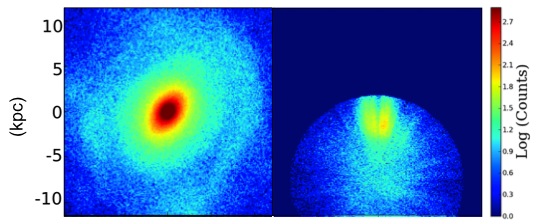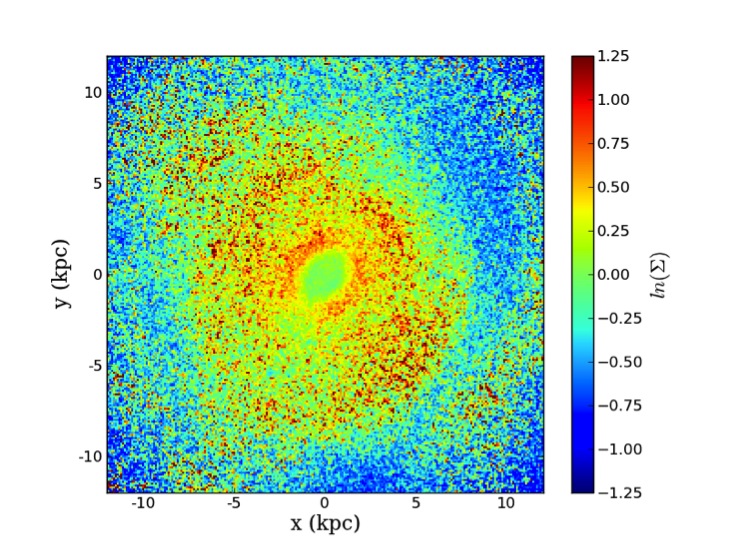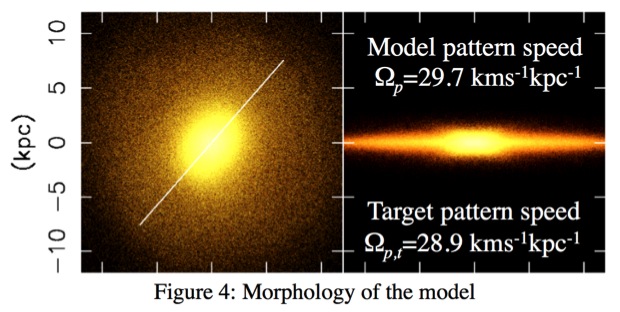PRIMAL
There is still a gulf between our theoretical galaxy models and the observational data, which must be bridged before we can achieve a fully dynamical model of the Milky Way, that is consistent with its observed properties. There remain many unanswered questions about our Galaxy and there exists a lot of uncertainty about its fundamental properties. For example, the Milky Way is known to be a barred spiral (e.g. Binney, Gerhard & Spergel 1997), but the size and shape of the bar, along with its angle, are still under debate. Constructing accurate models of the Milky Way is important for allowing us to understand and compensate for observational bias, which are present in all existing Galactic surveys due to dust, gas and our location within the disc. For the last two decades Galactic astrometry has been relying on Hipparcos data (e.g. Perryman et al. 1997), but we are now entering a golden age of Milky Way surveys both from the ground and in space, with Gaia at the forefront.
Because Gaia will not return the full data set for at least 5 years, we create mock observations of stars to test and calibrate PRIMAL. Using N-body simulations with 106 particles we construct a target disc model and convert it to equatorial coordinates. We add dust extinction effects to our mock observations using 3D dust extinction maps (Sharma et al. 2011), and we can then predict which stars will be observed by Gaia, and how bright they will be. We then add observational errors based on Gaia’s science performance estimates (Hunt & Kawata 2014). The error for each star depends on its type, magnitude and position in the sky. We currently use M0 Giant stars as tracers (one particle =1 M0III star), but will later expand PRIMAL to deal with multiple stellar types. This will give us more constraints, but increase the complexity of the method. We select tracers within a predetermined limit (e.g. 10 kpc & 16.5 mag for M0III), giving us 173,821 of 1,000,000 stars selected for use as observables (see Figure 1).

Figure 1: Full (left) and selected observed (right) M0III tracers, N-body model from Hunt & Kawata (2014).
For these initial tests of PRIMAL, we can start with a smooth initial galaxy model, with the same initial conditions as the target except for a lower initial scale length. For the moment the dark matter halo potential is fixed and assumed to be known for simplicity. We compare our M2M model with the mock data at the observed positions of the tracers using a smooth kernel for the density, and the likelihood function for the 3D velocity components. We then alter the model particle masses to better reproduce the model. The density is improved by minimising the χ2, and the velocity by maximising the likelihood (Hunt, Kawata & Martel 2013). Because we calculate the gravity self-consistently, this in turn alters the galactic potential and over time our model becomes a fully dynamical representation of the target. We resample a particle if its mass crosses predetermined limits, deleting particles whose mass becomes too small, and splitting particles whose mass becomes too large. This helps prevent a few large mass particles influencing the dynamics, and saves on computational time.

Figure 2: Face-on fractional projected surface density difference map calculated with a cloud-in-cell method on a 240 by 240 grid. Red shows an overdensity in the model, and blue is an underdensity in the model.
Figure 2 shows the fractional surface density difference map for the same model. It shows an excellent recovery in the inner bar, however there is an overestimation of the density around the bar and the ring structure seen in Figure 1 has not been recovered. Figure 3 shows the morphology of our model. The pattern (rotation) speed of the bar, Ωp, is reproduced excellently.

Figure 3: Face on and edge on reconstruction of the barred galaxy in Figures 1 and 2.
PRIMAL can construct realistic dynamical models from incomplete data, with error at the level Gaia will return. We are currently modifying PRIMAL to deal with multiple stellar populations simultaneously, by testing it on mock stellar catalogues generated by SNAPDRAGONS (see right). We will investigate the effects of the dark matter halo, which we currently assume known. This is a strong assumption that must be relaxed. We will investigate different halo potentials and possibly include a live halo.